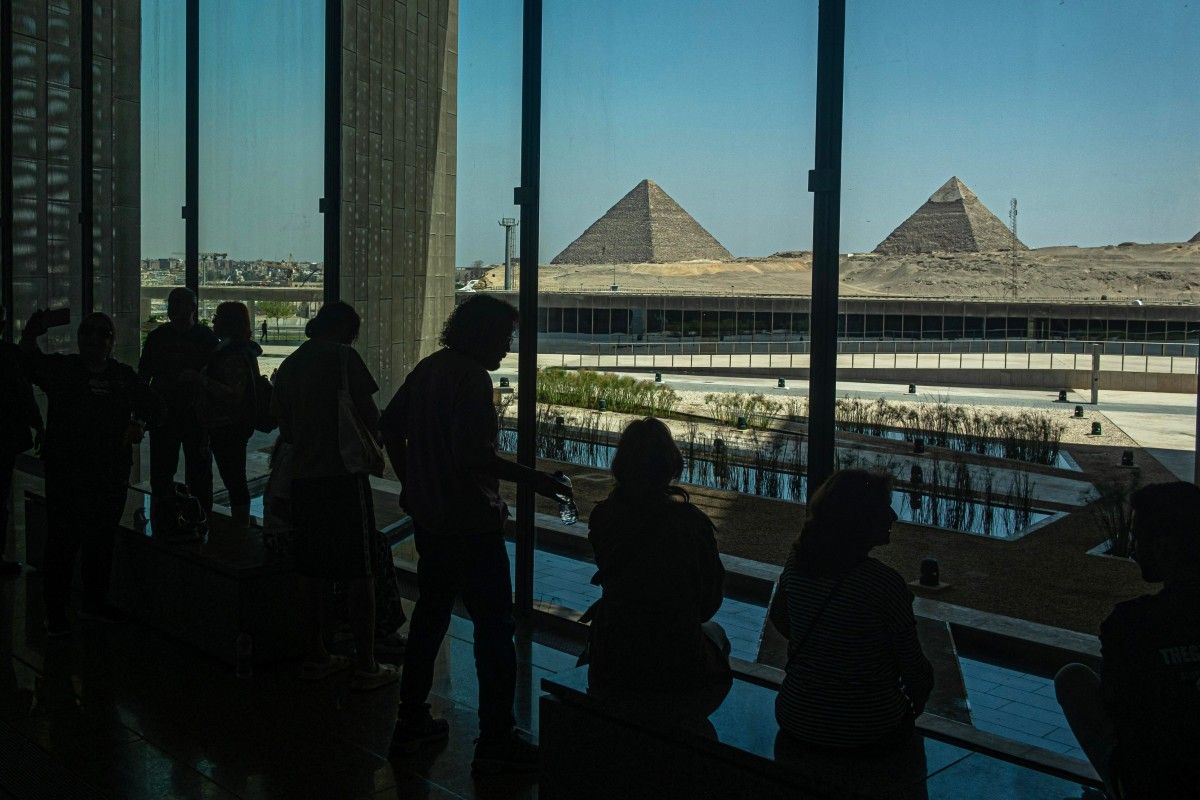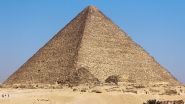
After two decades of anticipation, Egypt unveils its Grand Egyptian Museum near the Pyramids of Giza. The vast complex celebrates 5,000 years of pharaonic history and marks a new era for cultural tourism in the country.
Near the ancient Pyramids of Giza just outside Cairo, the Grand Egyptian Museum (GEM) is gearing up for a lavish opening on Saturday after two decades of delays.
Massive statues and historic artefacts from the country's ancient civilization will be on display across the 24,000 square meters (258,000 square feet) of permanent exhibition space.
Here are five things to know about the long-awaited museum, which Egyptian authorities have called "the largest cultural building of the 21st century."
The Fourth Pyramid
An imitation of the nearby pyramids of Khufu, Khafre and Menkaure, the museum's triangular glass structure was designed by the Irish firm Heneghan Peng Architects.
The state-of-the-art complex—dubbed the "fourth pyramid" of the Giza Plateau—houses around 100,000 artefacts from the 30 dynasties of ancient Egypt's pharaohs.
About half of the collection is on display, with the rest kept in storage.
The towering $1 billion facility, which has been more than 20 years in the making, is expected to draw more than 5 million visitors every year.
The government hopes the museum will play a central role in reviving an Egyptian economy battered by debt and inflation.
Statue of Ramses II
An 11-meter (36-foot) granite statue of Ramses the Great greets visitors in the vast entrance atrium.
Ramses II—the third king of the 19th Dynasty—reigned more than 3,000 years ago (1279–1213 BC) and is among the greatest of all the Egyptian pharaohs.
His statue has toured the world twice, attracting millions of visitors in 1986 and then from 2021 to 2025.
The GEM will be the statue's final home after several relocations since its discovery in 1820 near a temple in ancient Memphis, south of Cairo.
From 1954 to 2006 the statue stood in front of Cairo's main train station.
Treasures of Tutankhamun
One gallery is dedicated to the 5,000 artefacts from the collection of King Tutankhamun, the most well-known figure of Ancient Egypt.
The full collection is in one place for the first time since British archaeologist Howard Carter discovered the famed pharaoh's tomb in the Valley of the Kings near Luxor in 1922.
The boy king's gold-covered sarcophagus and his burial mask, inlaid with lapis lazuli, will take center stage at Saturday's opening.
After years of debate, genetic tests conducted in the early 2010s suggested malaria and a bone disease led to the pharaoh's death at the age of 19.
Solar Boats
A separate building was designed for the 4,600-year-old solar boat of Pharaoh Khufu, one of the largest and oldest wooden artefacts from antiquity.
The 44-metre-long (144-foot) cedar and acacia wooden boat was discovered in 1954 near the Great Pyramid of Khufu—the largest of the three structures.
Over the next three years, visitors will also be able to watch experts from behind a glass wall as they restore another boat discovered in 1987.
Panorama
The museum was partially opened to the public in October 2024.
Launched in 2002 under then-President Hosni Mubarak, its grand opening was delayed by political turmoil after the 2011 uprising, the Covid-19 pandemic and regional conflicts.
The GEM is built around a colossal six-storey staircase lined with mammoth statues and ancient tombs leading to a panoramic window with a view of the nearby pyramids.
Twelve main galleries trace civilization across 5,000 years of history, from prehistoric times to the Roman era.
The complex also includes storage areas open to researchers, laboratories, and restoration workshops.
It will open to the public on November 4.
By Sophie PONS / AFP




Comments